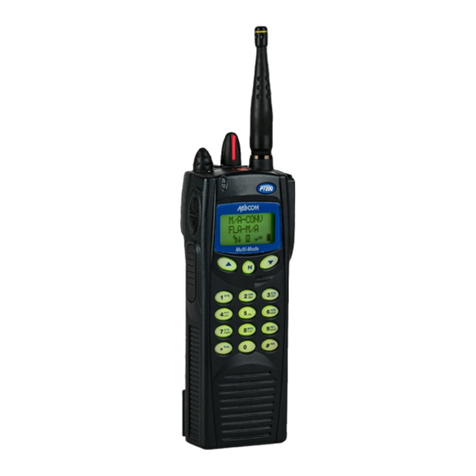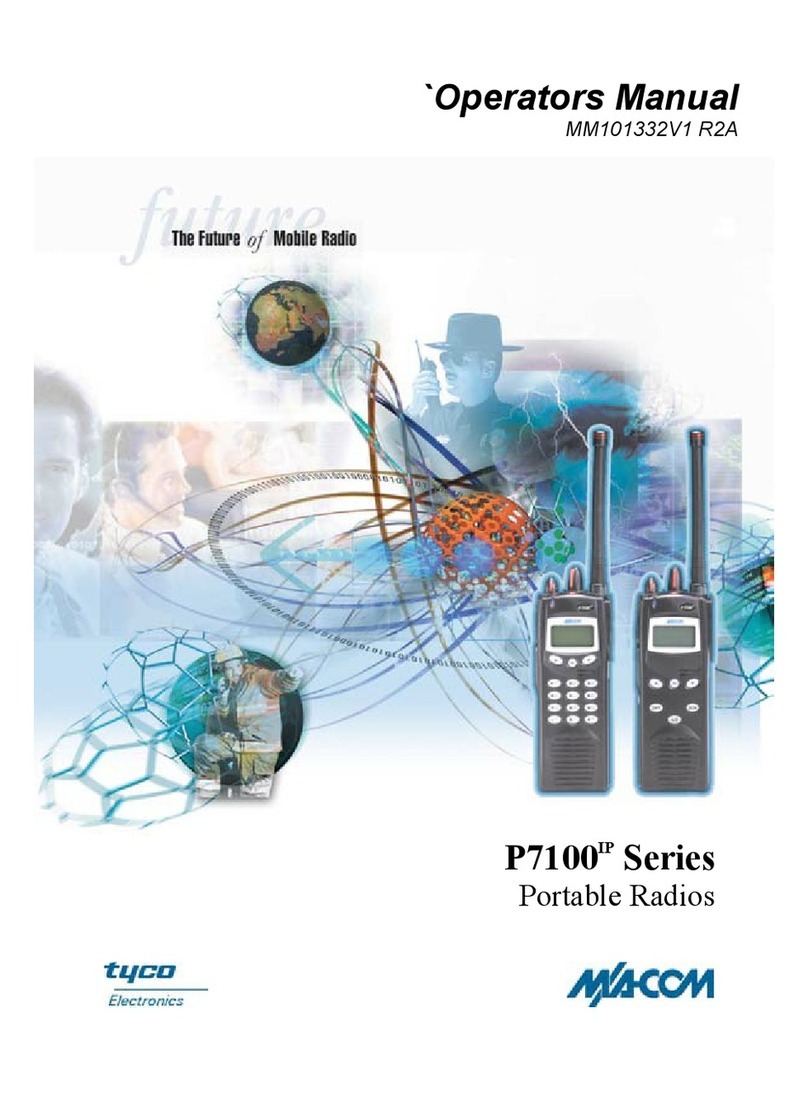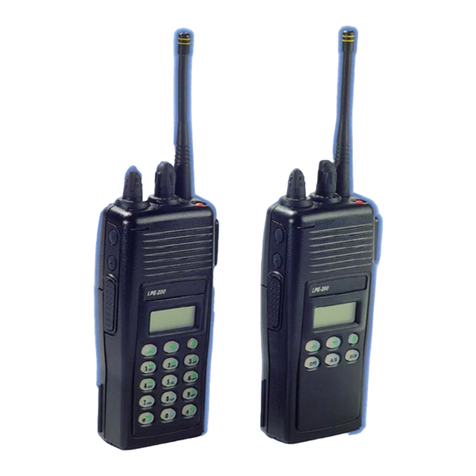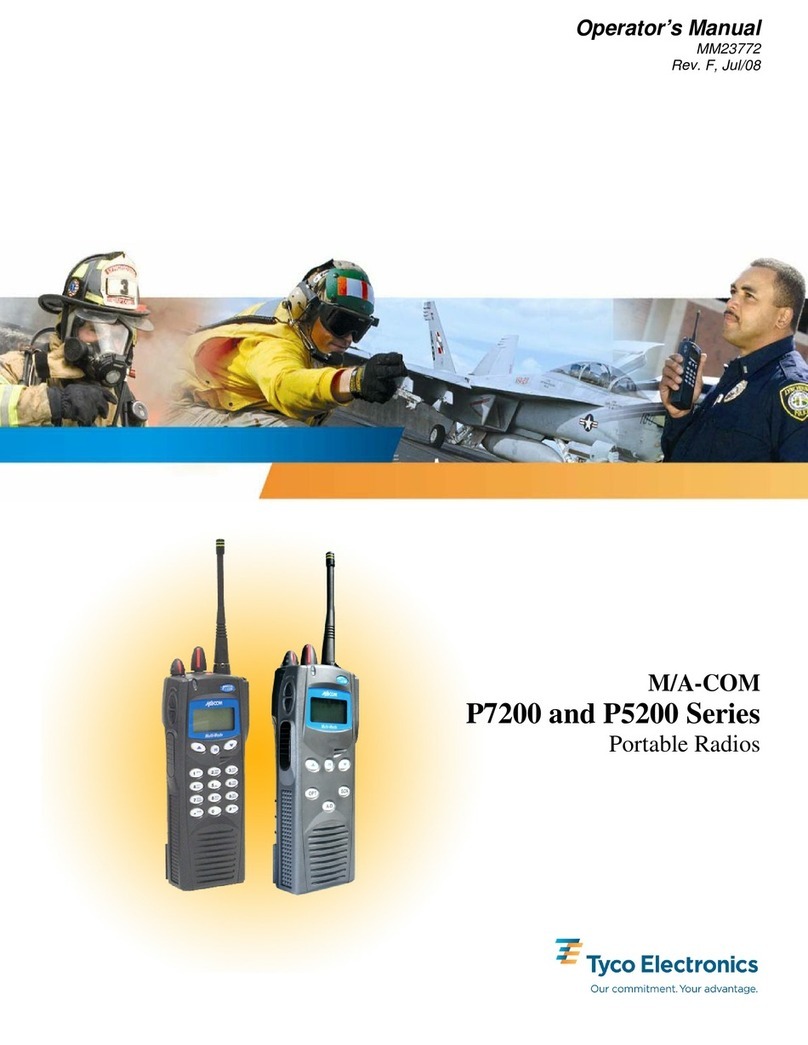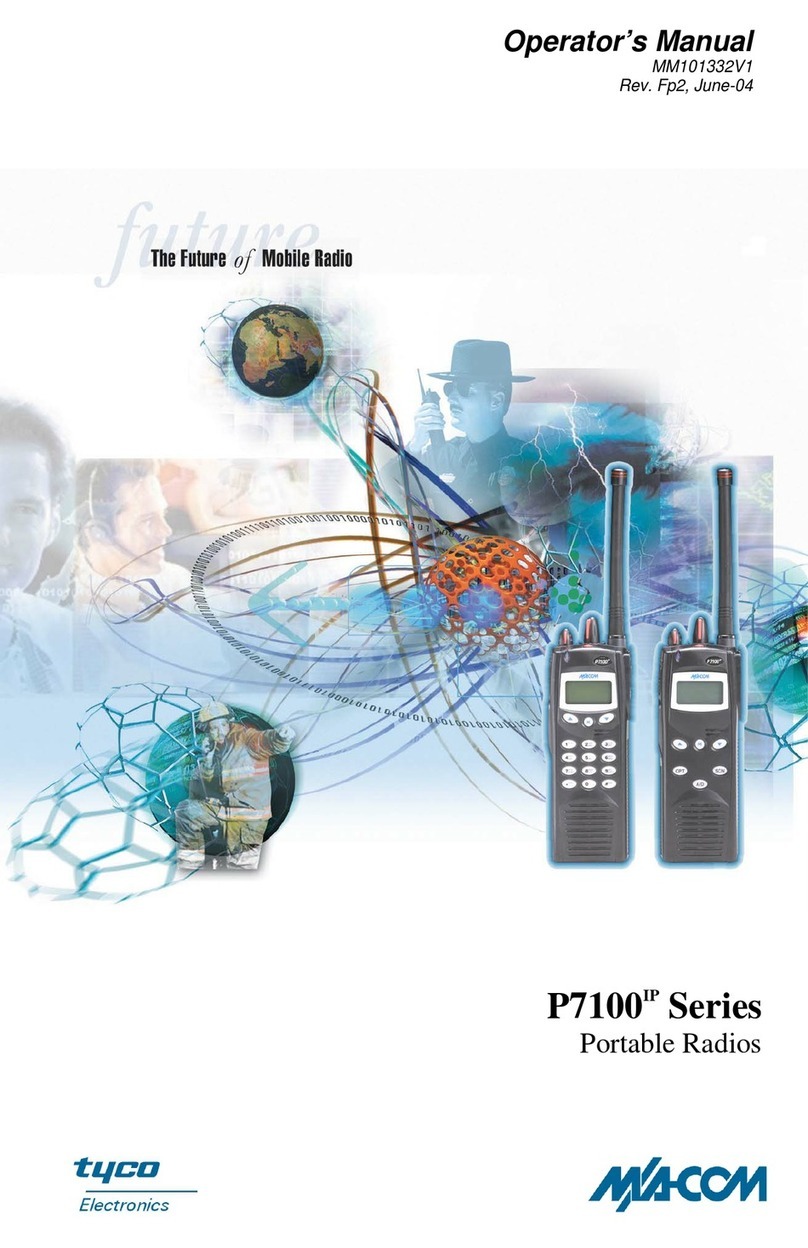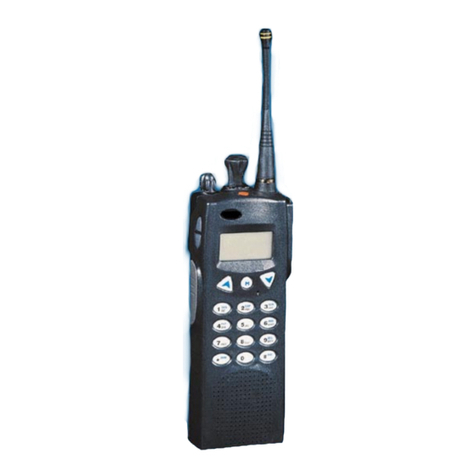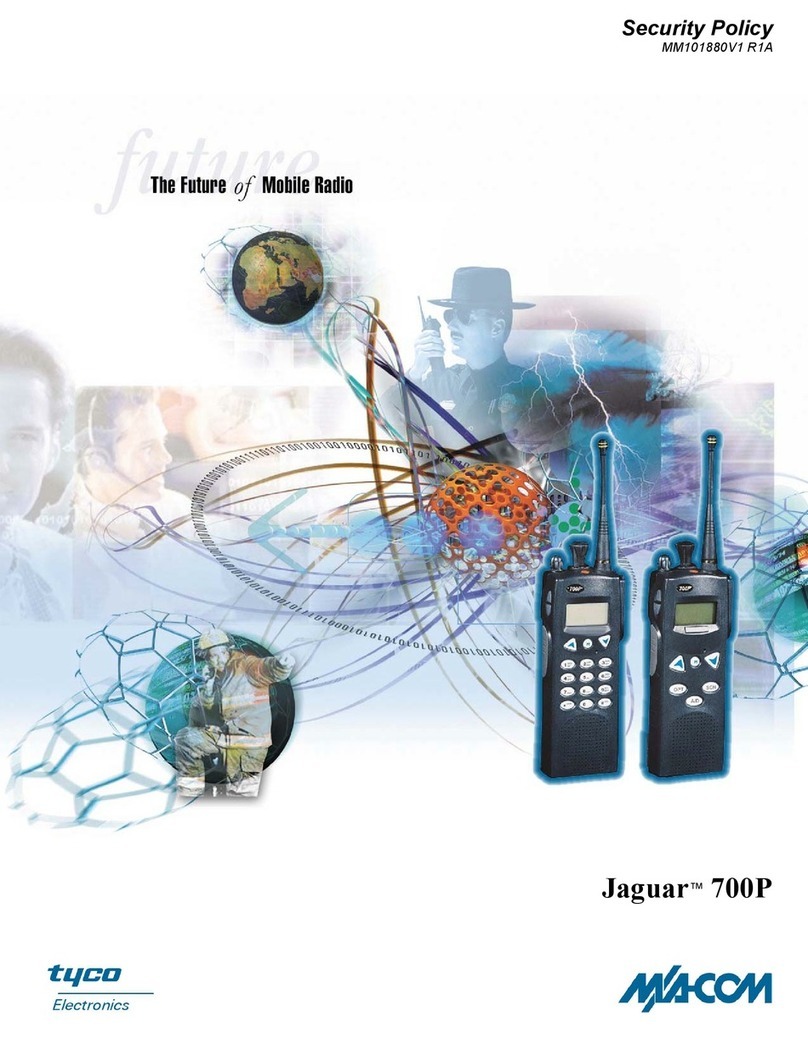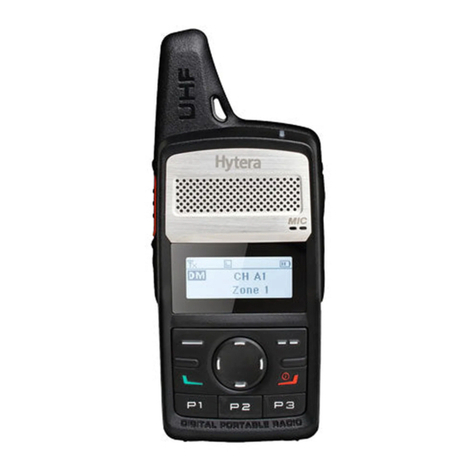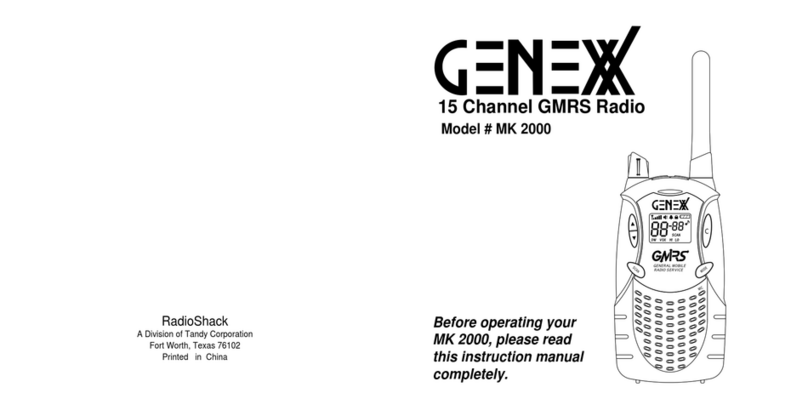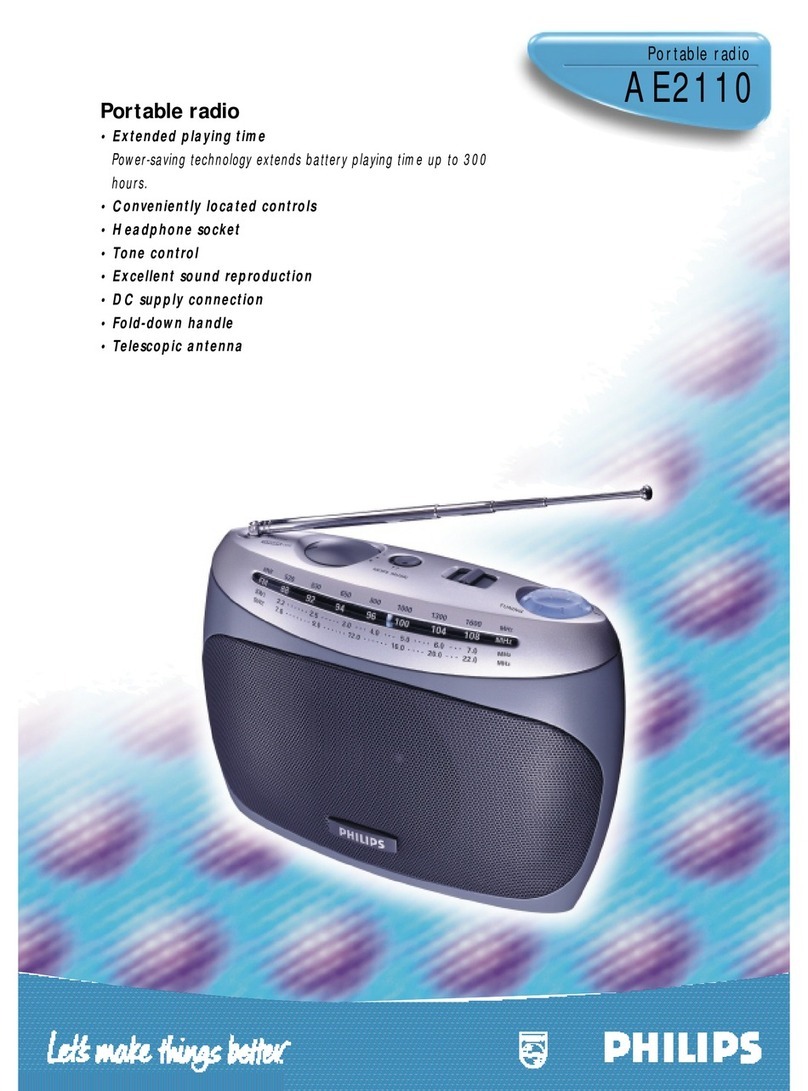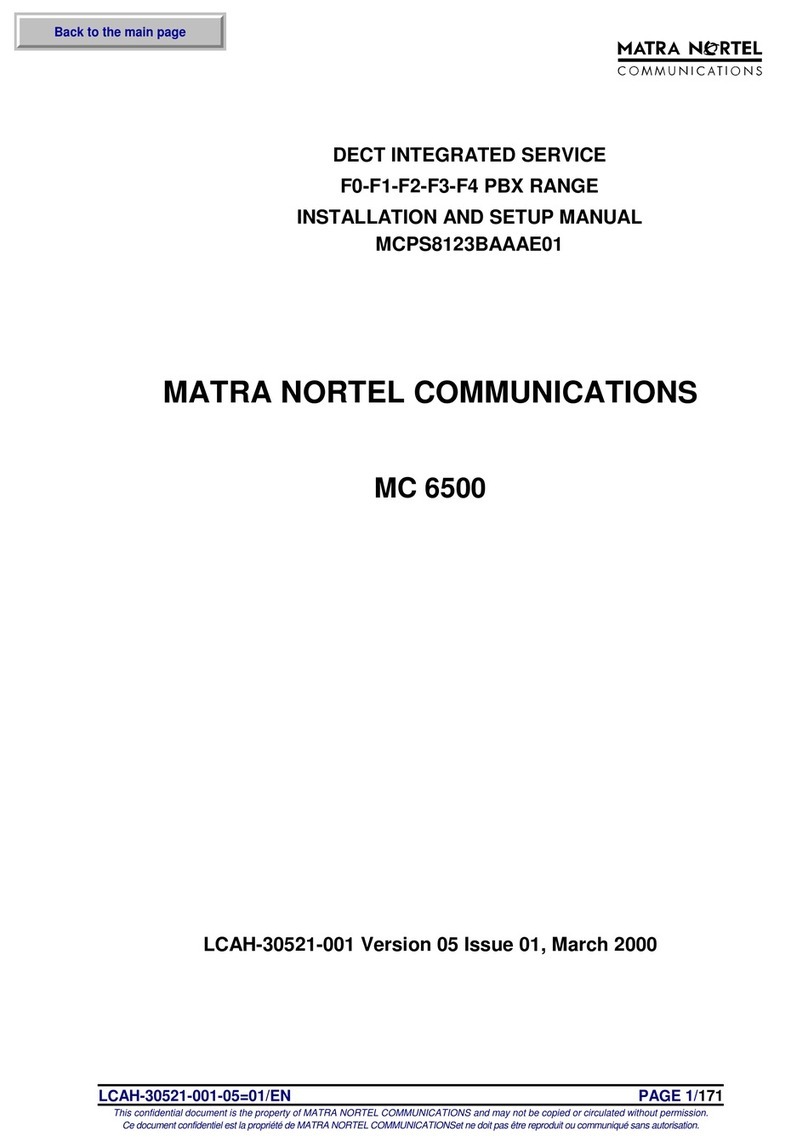
2
MANUAL REVISION HISTORY
REV DATE REASON FOR CHANGE
N Mar. 2005 Updated Nuisance Delete section.
PRODUCT SPECIFICATION FOR CE MARKED EQUIPMENT
Orion mobile radio units conform to the following Product Specifications.
EUROPEAN STANDARDS:
Safety: Not Applicable
EMC: EN 50082-1 (January 1992)
prEN 50082-1 (September 1995)
prETS 300 339 (June 1993)
EN 55022 Par. 5.1 (August 1994)
TTD: Not Applicable
SUPPLEMENTARY INFORMATION:
At this time, the Orion mobile radio may not be operated while in a desktop station in the
European Community since it does not meet immunity requirements when operated in this mode.
The Orion mobile radio may be used in both trunked and conventional applications.
CREDITS
Voice Guard is a registered trademark Orion, ProVoice, Aegis, ProFile, ProSound, ProScan,
SCAT, Failsoft, and G-STAR are trademarks of M/A-COM, Inc.
All other brand and product names are trademarks, registered trademarks, or service marks of
their respective holders.
NOTICE
The voice coding technology embodied in this product is protected by intellectual property rights
including patent rights, copyrights, and trade secrets of Digital Voice Systems, Inc. The user of
this technology is explicitly prohibited from attempting to decompile, reverse engineer, or
disassemble the Object Code, or in any way convert the Object Code into human-readable form.
The software contained in this device is copyrighted by M/A-COM, Inc. Unpublished rights are
reserved under the copyright laws of the United States.
This manual covers M/A-COM, Inc. products manufactured and sold by M/A-COM, Inc.
Repairs to this equipment should be made only by an authorized service technician or facility
designated by the supplier. Any repairs, alterations or substitution of recommended parts made
by the user to this equipment not approved by the manufacturer could void the user's authority to
operate the equipment in addition to the manufacturer's warranty.
This manual is published by M/A-COM, Inc., without any warranty. Improvements and changes to this manual necessitated by
typographical errors, inaccuracies of current information, or improvements to programs and/or equipment, may be made by M/A-
COM, Inc., at any time and without notice. Such changes will be incorporated into new editions of this manual. No part of this
manual may be reproduced or transmitted in any form or by any means, electronic or mechanical, including photocopying and
recording, for any purpose, without the express written permission of M/A-COM, Inc.
Copyright© 1993 - 2005 M/A-COM, Inc. All rights reserved.
